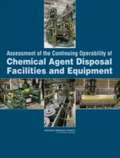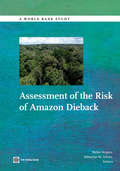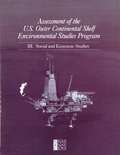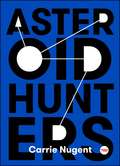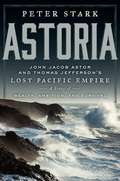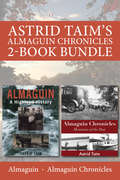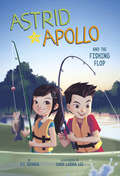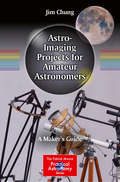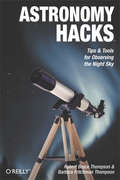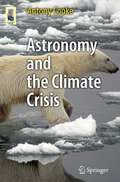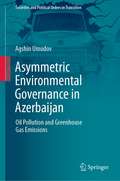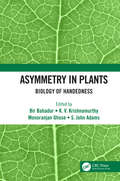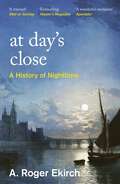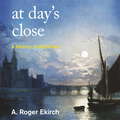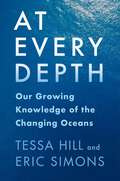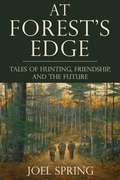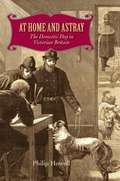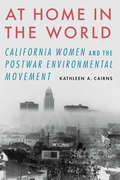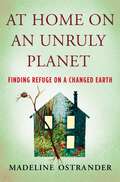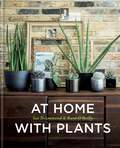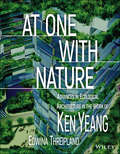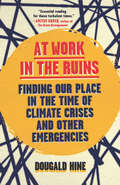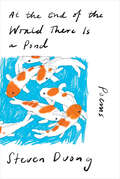- Table View
- List View
Assessment of the Continuing Operability of Chemical Agent Disposal Facilities and Equipment
by National Research Council of the National AcademiesThe U.S. Army’s Chemical Materials Agency (CMA) currently oversees contracts for the operation of chemical agent stockpile incineration facilities at four disposal sites. Because the period of time required to dispose of these chemical agents has grown beyond that originally planned, the Army is becoming concerned about the possibility of growing operational problems as the processing equipment ages. To help address these concerns, the CMA requested the NRC to assess whether current policies and practices will be able to adequately anticipate and address facility obsolescence issues. This report presents a review of potential infrastructure and equipment weaknesses given that the facilities are being operated well beyond their original design lifetime; an assessment of the Army’s current and evolving obsolescence management programs; and offers recommendations about how the programs may be improved and strengthened to permit safe and expeditious completion of agent stockpile destruction and facility closure.
Assessment of the Risk of Amazon Dieback
by Walter Vergara Sebastian M. ScholzThe Amazon basin is a key component of the global carbon cycle. Not only is the old-growth rainforests in the basin huge carbon storage with about 120 billion metric tons of carbon in their biomass, but they also process annually twice the rate of global anthropogenic fossil fuel emissions through respiration and photosynthesis. In addition, the basin is the largest global repository of biodiversity and produces about 20 percent of the world's flow of fresh water into the oceans. Despite the large CO2 efflux from recent deforestation, the Amazon rainforest is still considered to be a net carbon sink or reservoir because vegetation growth on average exceeds mortality. However, current climate trends and human-induced deforestation may be transforming forest structure and behavior. Amazon forest dieback would be a massive event, affecting all life-forms that rely on this diverse ecosystem, including humans, and producing ramifications for the entire planet. Clearly, with changes at a global scale at stake, there is a need to better understand the risk, and dynamics of Amazon dieback. Therefore, the purpose of the book is to assist in understanding the risk, process and dynamics of potential Amazon dieback and its implications.
Assessment of the U.S. Outer Continental Shelf Environmental Studies Program: III. Social and Economic Studies
by Socioeconomics PanelThis is the third of four volumes from the Committee to Review the Outer Continental Shelf (OCS) Environmental Studies Program (ESP). The first two dealt with physical, oceanographic, and ecological aspects of the program.This book presents the findings of the panel's investigation of the social and economic relevance of OCS oil and gas activities and the social and economic aspects of the ESP.It describes the potential effects of OCS activities on the human environment, presents an ideal socioeconomic studies program, and comments on the current program in the Atlantic, Gulf of Mexico, Pacific, and Alaska regions.
Assuming the Ecosexual Position: The Earth as Lover
by Annie Sprinkle Jennie Klein Beth StephensThe story of the artistic collaboration between the originators of the ecosex movement, their diverse communities, and the Earth What&’s sexy about saving the planet? Funny you should ask. Because that is precisely—or, perhaps, broadly—what Annie Sprinkle and Beth Stephens have spent many years bringing to light in their live art, exhibitions, and films. In 2008, Sprinkle and Stephens married the Earth, which set them on the path to explore the realms of ecosexuality as they became lovers with the Earth and made their mutual pleasure an embodied expression of passion for the environment. Ever since, they have been not just pushing but obliterating the boundaries circumscribing biology and ecology, creating ecosexual art in their performance of an environmentalism that is feminist, queer, sensual, sexual, posthuman, materialist, exuberant, and steeped in humor.Assuming the Ecosexual Position tells of childhood moments that pointed to a future of ecosexuality—for Annie, in her family swimming pool in Los Angeles; for Beth, savoring forbidden tomatoes from the vine on her grandparents&’ Appalachian farm. The book describes how the two came together as lovers and collaborators, how they took a stand against homophobia and xenophobia, and how this union led to the miraculous conception of the Love Art Laboratory, which involved influential performance artists Linda M. Montano, Guillermo Gómez-Peña, and feminist pornographer Madison Young. Stephens and Sprinkle share the process of making interactive performance art, including the Chemo Fashion Show, Cuddle, Sidewalk Sex Clinics, and Ecosex Walking Tours. Over the years, they celebrated many more weddings to various nature entities, from the Appalachian Mountains to the Adriatic Sea. To create these weddings, they collaborated with hundreds of people and invited thousands of guests as they vowed to love, honor, and cherish the many elements of the Earth.As entertaining as it is deeply serious, and arriving at a perilous time of sharp differences and constricting categories, the story of this artistic collaboration between Sprinkle, Stephens, their diverse communities, and the Earth opens gender and sexuality, art and environmentalism, to the infinite possibilities and promise of love.
Asteroid Hunters (TED Books)
by Carrie NugentFor the first time, scientists could have the knowledge to prevent a natural disaster epic in scale—an asteroid hitting the earth and in this exciting, adventuresome book, Carrie Nugent explains how.What are asteroids, and where do they come from? And, most urgently: Are they going to hit the Earth? What would happen if one was on its way? Carrie Nugent is an asteroid hunter—part of a group of scientists working to map our cosmic neighborhood. For the first time ever, we are reaching the point where we may be able to prevent the horrible natural disaster that would result from an asteroid collision. In Asteroid Hunters, Nugent reveals what known impact asteroids have had: the extinction of the dinosaurs, the earth-sized hole Shoemaker Levy 9 left in Jupiter just a few decades ago, how the meteorite that bursted over Chelyabinsk in Russia could have started a war, and unlucky Ms. Anne Hodges—the only person (that we know of) in US history to be the victim of a direct hit. Nugent also introduces the telescope she uses to detect near-Earth asteroids. Ultimately, detection is the key to preventing asteroid impact, and these specialized scientists are working to prevent the unthinkable from happening. If successful, asteroid hunting will lead to the first natural disaster humans have the know-how and the technology to prevent. The successful hunt and mapping of asteroids could mean nothing less than saving life on earth.
Astoria
by Peter StarkIn 1810, John Jacob Astor sent out two advance parties to settle the wild, unclaimed western coast of North America. More than half of his men died violent deaths. The others survived starvation, madness, and greed to shape the destiny of a continent.At a time when the edge of American settlement barely reached beyond the Appalachian Mountains, two visionaries, President Thomas Jefferson and millionaire John Jacob Astor, foresaw that one day the Pacific would dominate world trade as much as the Atlantic did in their day. Just two years after the Lewis and Clark expedition concluded in 1806, Jefferson and Astor turned their sights westward once again. Thus began one of history's dramatic but largely forgotten turning points in the conquest of the North American continent.Astoria is the harrowing tale of the quest to settle a Jamestown-like colony on the Pacific coast. Astor set out to establish a global trade network based at the mouth of the Columbia River in what is now Oregon, while Jefferson envisioned a separate democracy on the western coast that would spread eastward to meet the young United States.Astor backed this ambitious enterprise with the vast for-tune he'd made in the fur trade and in New York real estate since arriving in the United States as a near-penniless immigrant soon after the Revolutionary War. He dispatched two groups of men west: one by sea around the southern tip of South America and one by land over the Rockies. The Overland Party, led by the gentlemanly American businessman Wilson Price Hunt, combined French-Canadian voyageurs, Scottish fur traders, American woodsmen, and an extraordinary Native American woman with two toddlers. The Seagoing Party, sailing aboard the ship Tonquin, likewise was a volatile microcosm of contemporary North America. Under the bitter eye of Captain Jonathan Thorn, a young U.S. naval hero whose unyielding, belligerent nature was better suited to battle than to negotiating cultural differences, the Tonquin made tumultuous progress toward its violent end.Unfolding from 1810 to 1813, Astoria is a tale of high adventure and incredible hardship, drawing extensively on firsthand accounts of those who made the journey. Though the colony itself would be short-lived, its founders opened provincial American eyes to the remarkable potential of the western coast, discovered the route that became the Oregon Trail, and permanently altered the nation's landscape and global standing.
Astrid Taim's Almaguin Chronicles 2-Book Bundle: Almaguin / Almaguin Chronicles
by Astrid TaimThe Almaguin Highlands, an extensive territory covering a 90 kilometre corridor from Huntsville, north to Callander, west to Dunchurch, and east to the Algonquin Park border, is a land rich with lakes, rivers, and a lively history. Once considered as a site for a First Nations Reserve in the early 1800s, Almaguin became a centre for lumbering and ultimately a year-round mecca for outdoor enthusiasts. This 2-book bundle is Astrid Taim's definitive guide to the region and its heritage. Almaguin: A Highland History offers a wide range of stories from the opening of the area by colonization roads to the first vessels on the Magnetawan River and the courage of the early pioneers. Included are community histories of the many towns, villages, and ghost towns of today; profiles of colourful personalities; as well as interesting and amusing tales of these rugged early times. Almaguin Chronicles explores the relationship between lumbering and settlement throughout the Parry Sound District — the last frontier of this part of Ontario. Throughout, rare archival photographs and excerpts from unpublished memoirs augment the text.
Astrid and Apollo and the Fishing Flop (Astrid and Apollo)
by V.T. BidaniaIt's the twins' first time fishing. Astrid and Apollo can't wait to ride on their Uncle Lue's fast boat and get goofy pictures with all the fish they catch. But Apollo keeps catching things that are not fish! When a storm brings them to shore, Apollo starts to feel like he's a fishing failure. Can the twins turn the day around and help Apollo find the fun in fishing?
Astrid and Apollo and the Starry Campout (Astrid and Apollo)
by V.T. BidaniaAstrid is afraid of the dark and doesn't want to go on her family camping trip. But her twin brother, Apollo, is excited. When they encounter scary things such as crawly bugs and the creepy dark, Apollo helps his twin through them. And when they encounter the scariest thing of all, Astrid might just be the one to save the starry campout.
Astro-Imaging Projects for Amateur Astronomers: A Maker’s Guide (The Patrick Moore Practical Astronomy Series)
by Jim ChungThis is the must-have guide for all amateur astronomers who double as makers, doers, tinkerers, problem-solvers, and inventors. In a world where an amateur astronomy habit can easily run into the many thousands of dollars, it is still possible for practitioners to get high-quality results and equipment on a budget by utilizing DIY techniques. Surprisingly, it's not that hard to modify existing equipment to get new and improved usability from older or outdated technology, creating an end result that can outshine the pricey higher-end tools. All it takes is some elbow grease, a creative and open mind and the help of Chung's hard-won knowledge on building and modifying telescopes and cameras. With this book, it is possible for readers to improve their craft, making their equipment more user friendly. The tools are at hand, and the advice on how to do it is here. Readers will discover a comprehensive presentation of astronomical projects that any amateur on any budget can replicate - projects that utilize leading edge technology and techniques sure to invigorate the experts and elevate the less experienced. As the "maker" community continues to expand, it has wonderful things to offer amateur astronomers with a willingness to get their hands dirty. Tweaking observing and imaging equipment so that it serves a custom purpose can take your observing options to the next level, while being fun to boot.
Astronomy Hacks: Tips and Tools for Observing the Night Sky
by Robert Bruce Thompson Barbara Fritchman ThompsonWhy use the traditional approach to study the stars when you can turn computers, handheld devices, and telescopes into out-of-this-world stargazing tools? Whether you're a first timer or an advanced hobbyist, you'll find Astronomy Hacks both useful and fun. From upgrading your optical finder to photographing stars, this book is the perfect cosmic companion.This handy field guide covers the basics of observing, and what you need to know about tweaking, tuning, adjusting, and tricking out a 'scope. Expect priceless tips and tools for using a Dobsonian Telescope, the large-aperture telescope you can inexpensively build in your garage. Get advice on protocols involved with using electronics including in dark places without ruining the party.Astronomy Hacks begins the space exploration by getting you set up with the right equipment for observing and admiring the stars in an urban setting. Along for the trip are first rate tips for making most of observations. The hacks show you how to:Dark-Adapt Your Notebook ComputerChoose the Best BinocularClean Your Eyepieces and Lenses SafelyUpgrade Your Optical FinderPhotograph the Stars with Basic EquipmentThe O'Reilly Hacks series has reclaimed the term "hacking" to mean innovating, unearthing, and creating shortcuts, gizmos, and gears. With these hacks, you don't dream it-you do it--and Astronomy Hacks brings space dreams to life. The book is essential for anyone who wants to get the most out of an evening under the stars and have memorable celestial adventures.
Astronomy and the Climate Crisis (Astronomers' Universe)
by Antony CookeClimate change is acknowledged as being one of the most important areas of research today. Increasing global temperatures will impact all of us to a greater or lesser extent. From the point of view of research it is an enormously important and complex subject. However, little attention is paid to its relationship to astronomy, the sun in particular but not exclusively. Though directed at an astronomically inclined readership, and providing some less well-known astronomically related information, studies and concepts, this book will also appeal to a broader public, who need to understand the subject of climate change and learn of all the various theories and possible solutions.
Asymmetric Environmental Governance in Azerbaijan: Oil Pollution and Greenhouse Gas Emissions (Societies and Political Orders in Transition)
by Agshin UmudovThis book examines why authoritarian governments are willing to address environmental problems that have an international impact, such as CO2 emissions, but are reluctant to address problems that have only a domestic impact. In a case study of Azerbaijani oil politics, it demonstrates how the incumbent Azerbaijani regime has taken important measures trying to address CO2 emissions while ignoring the damage caused by oil pollution on the Caspian coast. The book argues that resource-rich authoritarian governments are eager to join international environmental initiatives to improve their image, but they address domestic environmental issues mainly if they threaten their hold on power.This book is an important contribution to scholarship on environmental governance in the post-Soviet space, an area that is poorly researched. Therefore, it is a must-read for researchers and scholars interested in post-Soviet studies, as well as in the nexus between mineral-rich regions and how social policy is created, e.g., environment, education, and healthcare. In addition, this book will be of tremendous importance for policymakers and international organizations as it looks into the motivation of authoritarian states in the post-Soviet space for environmental measures.
Asymmetry in Plants: Biology of Handedness
by Bir Bahadur K. V. Krishnamurthy Monoranjan Ghose S. John AdamsPlants exhibit forms of asymmetry analogous to "handedness" in bilaterally symmetrical animals. This book explores the evolutionary significance and development of asymmetry. Examples of genetic control include the direction of tendril or stem coiling of many climbing plants; the so-called spiral phyllotaxy and floral taxy; and contorted petal arrangement is another kind of left- right symmetry in plants; the direction of contortion is fixed in some but not in other plants. The book will underscore tha all phenomena related to handedness start during embryogenesis itself, with the occurrence of embryo rotation. Key selling features: First consolidated book on Plant Handedness Relates handedness, asymmetry and chirality to the evolution of different organizational levels in plant biology Emphasizes handedness as a vital governing force in plant functional evolution Provides a new perspective, hitherto ignored, into plant developemtn and evolution Describes how an age-old phenomenon can give scope for investigation from a very modern interdisciplinary approach
At Day's Close: A History of Nighttime
by A. Roger EkirchA fascinating and colourful social history of the nighttime in the pre-Industrial era.AT DAY'S CLOSE charts a fresh realm of Western culture, nocturnal life from the late medieval period to the Industrial revolution. The book focuses on the cadences of daily life, investigating nighttime in its own right and resurrecting a rich and complex universe in which persons passed nearly half of their lives - a world, long-lost to historians, of blanket fairs, night freaks, and curtain lectures, of sun-suckers, moon-cursers and night-kings. It is not only the vocabulary that has disappeared, AT DAY'S CLOSE will restitute many facts which have been either lost or forgotten. It is a significant and newsworthy contribution to social history, filled with substantial research, stories and new discoveries.Ekirch uses a wide range of sources to reconstruct how the night was lived in the past : travel accounts, memoirs, letters, poems, plays, court records, coroner's reports, depositions and laws dealing with curfews, crime and lighting. He has analysed working-class autobiographies, proverbs, nursery rhymes, ballads and sermons, and folklore, as well as consulting medical, psychological and anthropological papers.
At Day's Close: A History of Nighttime
by Professor A. Roger EkirchA fascinating and colourful social history of the nighttime.'A wonderful revelation of a vanished age of darkness' SPECTATOR'Fascinating' SUNDAY TIMES'A splendid book ... great entertainment' Sir Patrick Moore'A triumph of social history. Almost every page contains something to surprise the reader ... one of the most enjoyable literary experiences of the year' MAIL ON SUNDAYFrom blanket fairs to night kings, curfews to crime, At Day's Close is an intriguing and captivating investigation into the night. Until now, this rich and complex universe in which we spend nearly half of our lives was a world long-lost to historians. Here, Ekirch explores how the night was lived in the past, through travel accounts, memoirs, letters, folklore, poems, court records and coroner's reports. More than this, it is a passionate argument in the case for less artificial light in an increasingly bright world.
At Every Depth: Our Growing Knowledge of the Changing Oceans
by Tessa Hill Eric SimonsThe world’s oceans are changing at a drastic pace. Beneath the waves and along the coasts, climate change and environmental degradation have spurred the most radical transformations in human history. In response, the people who know the ocean most intimately are taking action for the sake of our shared future. Community scientists track species in California tidepools. Researchers dive into the waters around Sydney to replant kelp forests. Scientists and First Nations communities collaborate to restore clam gardens in the Pacific Northwest.In At Every Depth, the oceanographer Tessa Hill and the science journalist Eric Simons profile these and other efforts to understand and protect marine environments, taking readers to habitats from shallow tidepools to the deep sea. They delve into the many human connections to the ocean—how people live with and make their living from the waters—journeying to places as far-flung as coral reefs, the Great Pacific Garbage Patch, and the Arctic and Antarctic poles. At Every Depth shares the stories of people from all walks of life, including scientists, coastal community members, Indigenous people, shellfish farmers, and fisheries workers. It brings together varied viewpoints, showing how scientists’ research and local and Indigenous knowledge can complement each other to inform a more sustainable future. Poignantly written and grounded in science, this book offers a narrative perspective on the changing oceans, letting us see how our relationships to the oceans are changing too.
At Forest's Edge: Tales of Hunting, Friendship, and The Future
by Joel SpringOutdoor literature lends itself well to reminiscence of the past; days gone by, hunts with old friends, and good dogs long gone. Joel Spring explored the past in depth with The Ghosts of Autumn (Skyhorse Publishing, 2016). In his latest work, At Forest&’s Edge, Spring turns his thoughts and insights to the future and the future of the sport of hunting. In essays span - ning a season afield, At Forest&’s Edge speaks to the upcoming generation of hunters as well as those of us who have a few more miles on our boots. The au - thor weaves humor, sadness, and a sense of hope seamlessly together in another engaging book. Inside you&’ll find deer and ducks, dogs and friends, adventure and reflection. Most importantly, you&’ll find hope for the future. Come take a walk with Joel Spring At Forest&’s Edge .
At Home and Astray
by Philip HowellAlthough the British consider themselves a nation of dog lovers, what we have come to know as the modern dog came into existence only after a profound, and relatively recent, transformation in that country's social attitudes and practices. In At Home and Astray, Philip Howell focuses on Victorian Britain, and especially London, to show how the dog's changing place in society was the subject of intense debate and depended on a fascinating combination of forces even to come about.Despite a relationship with humans going back thousands of years, the dog only became fully domesticated and installed at the heart of the middle-class home in the nineteenth century. Dog breeding and showing proliferated at that time, and dog ownership increased considerably. At the same time, the dog was increasingly policed out of public space, the "stray" becoming the unloved counterpart of the household "pet." Howell shows how this redefinition of the dog's place illuminates our understanding of modernity and the city. He also explores the fascinating process whereby the dog's changing role was proposed, challenged, and confronted--and in the end conditionally accepted. With a supporting cast that includes Charles Dickens, Elizabeth Barrett Browning, Thomas Carlyle, and Charles Darwin, and subjects of inquiry ranging from vivisection and the policing of rabies to pet cemeteries, dog shelters, and the practice of walking the dog, At Home and Astray is a contribution not only to the history of animals but also to our understanding of the Victorian era and its legacies.
At Home in the World: California Women and the Postwar Environmental Movement
by Kathleen A. CairnsFrom the beginning of California&’s statehood, adventurers, scientists, and writers reveled in its majestic landscape. Some were women, though few garnered attention or invitations to join the Sierra Club, the organization created in 1892 to preserve wilderness. Over the next sixty years the Sierra Club and other groups gained prestige and members—including an increasing number of women. But these organizations were not equipped to confront the massive growth of industry that overtook postwar California. This era needed a new approach, and it came from an unlikely source: white, middle-class housewives with no experience in politics. These women successfully battled smog, nuclear power plants, piles of garbage in the San Francisco Bay, and over-building in the Santa Monica Mountains. In At Home in the World Cairns shows how women were at the center of a broader and more inclusive environmental movement that looked beyond wilderness to focus on people&’s daily life. These women challenged the approach long promoted by establishment groups and laid the foundation for the modern environmental movement.
At Home on an Unruly Planet: Finding Refuge on a Changed Earth
by Madeline OstranderFrom rural Alaska to coastal Florida, a vivid account of Americans working to protect the places they call home in an era of climate crisisHow do we find a sense of home and rootedness in a time of unprecedented upheaval? What happens when the seasons and rhythms in which we have built our lives go off-kilter?Once a distant forecast, climate change is now reaching into the familiar, threatening our basic safety and forcing us to reexamine who we are and how we live. In At Home on an Unruly Planet, science journalist Madeline Ostrander reflects on this crisis not as an abstract scientific or political problem but as a palpable force that is now affecting all of us at home. She offers vivid accounts of people fighting to protect places they love from increasingly dangerous circumstances. A firefighter works to rebuild her town after catastrophic western wildfires. A Florida preservationist strives to protect one of North America's most historic cities from rising seas. An urban farmer struggles to transform a California city plagued by fossil fuel disasters. An Alaskan community heads for higher ground as its land erodes.Ostrander pairs deeply reported stories of hard-won optimism with lyrical essays on the strengths we need in an era of crisis. The book is required reading for anyone who wants to make a home in the twenty-first century.
At Home with Plants
by Ian Drummond Kara O'Reilly***A stylish addition to the current craze for indoor greenery, this is as much about how you use plants as an integral part of contemporary decor as how to keep them alive and well. - The Sunday TimesHouseplants are hot, and creative interior planting is becoming increasingly easy to achieve. The new wave of unusual and dramatic indoor plants is as much about décor and statement as greenery. Used aesthetically, as a focal point and sculptural element in interior design, indoor gardening is not just about possessing or growing a plant, but about using it as an accessory combined with other objects to create a particular style and mood. In this much-needed book, now reissued with a new cover and updated source directory, Ian and Kara show you how to transform your home with plants and tells you which plants will work best where and how to care for them. From strikingly geometric terrariums to pretty hanging baskets, practical herb pots and colourful window displays, this book is packed full of exciting and gorgeous ideas. Specially commissioned photography by Nick Pope throughout proves that bringing the outdoors in really is the best form of interior design.
At One with Nature: Advances in Ecological Architecture in the Work of Ken Yeang
by Ken Yeang Edwina Threipland"At One with Nature is an inspiring collection of the latest work of Ken Yeang that further advances sustainable architecture and design. This collection features recent projects as he explores how we can achieve harmony between the natural and our built environments to create a better planet by design. Each project features and highlights not only the systems and devices adopted, but also outlines the intentions and ecological considerations demonstrating best practices for how we can proceed moving forward. The book role models our living Earth and shows how we can behave as stewards of our planet."--Cassia Patel, Oceanic Global Foundation At One with Nature showcases Ken Yeang's latest ideas, built projects designs, research work and advances in the field of designing with nature, a topic that Yeang has pioneered and developed over many decades since receiving his doctorate in ecological design and planning from Cambridge University. His ideas and work are even more pertinent today with the current state of devastation of Earth's natural systems and a biogeochemical cycle that has been extensively and severely impacted by human society. The global environment today is in a state of crisis, but what can society do to address the issues? Yeang's recent projects are presented with instructive diagrams that provide a basis for action for architects, planners, designers, engineers, and anyone whose daily work impinges on the natural environment. Offered in a highly visual, annotated format, with instructive illustrations of Yeang's theoretical books on the topic, At One with Nature is an invaluable resource that students and academics interested in designing with nature will find both informative and relevant.
At Work in the Ruins: Finding Our Place in the Time of Climate Crises and Other Emergencies
by Dougald Hine&‘One of the most perceptive and thought-provoking books …Essential reading for these turbulent times.&’ Amitav Ghosh, author of The Great Derangement&‘Dougald Hine&’s brilliant book demands we stare into that abyss and rethink our securest certainties about what is actually going on in the climate crisis. It&’s lucidly unsettling and yet in the end empowering. There is something we can do, and it starts with where we look, how we see and what we choose to change.&’ Brian Eno, Musician&‘[A] rich book, which like a poetic or religious text deserves multiple readings&’ Richard Smith, British Medical Journal&‘I consider this book a must-read for all those activists feeling lost, desperate and perhaps subject to &‘press-on-itis&’.&’ Gail Bradbrook, cofounder, Extinction RebellionDougald Hine, world-renowned environmental thinker, has spent most of his life talking to people about climate change. And then one afternoon in the second year of the pandemic, he found he had nothing left to say. Why would someone who cares so deeply about ecological destruction want to stop talking about climate change now? At Work in the Ruins explores that question.&‘Climate change asks us questions that climate science cannot answer,&’ Dougald says. Questions like, how did we end up in this mess? Is it just a piece of bad luck with atmospheric chemistry – or is it the result of a way of approaching the world that would always have brought us to such a pass? How we answer such questions also has consequences.Through our over-reliance on the single lens of science, Dougald writes that we are blinded to the nature of the crises around and ahead of us, leading to &‘solutions&’ that can only make things worse. At Work in the Ruins is his reckoning with the strange years we have been living through and our long history of asking too much of science. He offers guidance by standing firmly forward and facing the depth of the trouble we are in, to ultimately, helps us find the work that is worth doing, even in the ruins.
At the End of the World There Is a Pond: Poems
by Steven DuongA stunning debut volume infused with apocalyptic overload, beginnings and endings, and all the ways we betray ourselves. At the End of the World There Is a Pond is a book about aftermaths. Each poem comes in the wake of a deep rupture—the ruptures of mental illness and addiction, of migration and displacement, of violence, familial conflict, and ecological catastrophe—and yet the speakers engage with despair and playfulness in equal measure, always allowing humor, irony, and the exuberance of contemporary life to bend darkness toward something like hope. Again and again, Steven Duong’s writing excavates the unnatural conditions of a seemingly natural world, asking us to pay studied attention to its inhabitants. His poems force us to keep looking: at the betta fish trapped in its mason jar, the forest choked by invasive kudzu, the elephant wounded in a landmine blast. Through its relentless scrutiny and exacting care, this magisterial debut collection poses an impossible question: How can we reconcile a deep love for the world, in all its buzzing, wriggling aliveness, with an equally deep, self-destructive desire to leave it behind?
